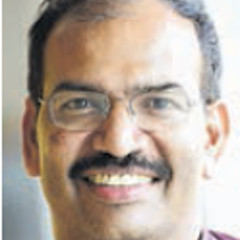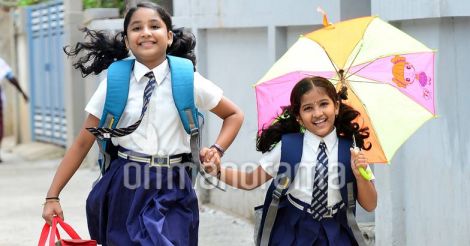Nothing can be termed more tragic than the plight of the parents having to receive the listless body of their child who was happily sent off to school in the morning. Three such incidents were reported from across Kerala on the first day of the academic year on Wednesday.
Many school students are injured while travelling to or from the school or inside the campus or during leisure trips. In developed countries, the first day in school is dedicated to awareness programmes on safety. The children who move away from the constant watch of their parents are told about the risks in their surroundings on the first day itself. They are told who to call in case of an accident.
Each school presents various risks of accidents. It could be the road that runs in front of the school or the river that flows through the backyard. It could be a well or tank on the school premises. It could be the electricity line passing overhead or the trees swaying in the wind.
School managers and teachers should prepare a questionnaire to identify such dangers present on their campuses. They should address the risks whenever they can. They could fell the tree that leans over the class room or build a protection wall around the well. Any area on the campus where construction is allowed should be kept out of bounds for the students. Vehicles access to the campus should be restricted.
School authorities should identify and address the dangers wherever they can before creating awareness among the students about general security precautions. A first-aid unit in the school should complement it. At least a couple of teachers - a man and a woman - should be trained in first aid. Every school should keep ready the number of the nearest hospital with an ambulance.
Programmes in the school that extends to the night are more at risk. So are the events that are organised outside the school and the picnics to faraway destinations. Teachers and parents should sit together to discuss the risks and precautions before any such event. Students should be given specific directions before the programmes.
The daily travel to school is also risky. Students face a variety of dangers, from road accidents to stray dog attacks in Kerala’s specific conditions. We may not be able to stop them all at one go but parents and teachers should think of them and talk about them to the students to make them aware of the possibilities.
Students who learn about safety on the first day of school will herald a new culture that stresses on safety and security. They will pass on the spirit to their parents.
The urge to be safe will stay on with them when they become a doctor or engineer or driver or welder. This is how the other countries have nurtured a culture of safety. Let the deaths of the three young children change our lackadaisical mindset.
(The writer is chief of disaster risk reduction in the United Nations Environment Programme. The opinions are personal.)

























 Representative image
Representative image